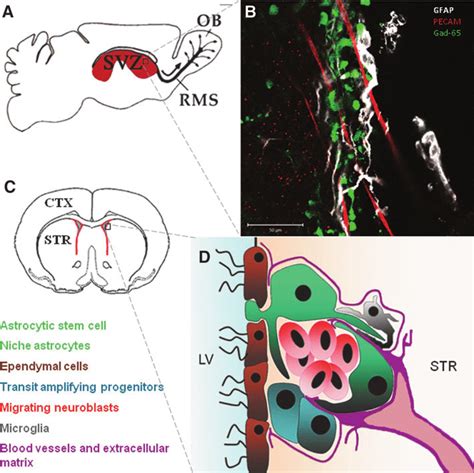Unlocking the Secrets of SVZ Setpoint Time: A Deep Dive into Neural Stem Cell Regulation
The subventricular zone (SVZ) is a fascinating region of the adult brain, a niche harboring neural stem cells (NSCs) with the remarkable ability to generate new neurons throughout life. Understanding the precise regulation of these NSCs is crucial, not only for basic neuroscience but also for developing potential therapies for neurodegenerative diseases and brain injuries. Central to this regulation is the concept of SVZ setpoint time, a less explored but critically important aspect of NSC behavior. This article will delve into the intricacies of SVZ setpoint time, exploring its definition, its underlying mechanisms, and its implications for brain health and disease.
What is SVZ Setpoint Time?
SVZ setpoint time refers to the inherent timing mechanism governing the progression of neural stem cells through their cell cycle. It dictates when a NSC will divide, differentiate, or remain quiescent. Unlike a simple on/off switch, it's a dynamic process influenced by a complex interplay of internal and external factors. Think of it as a biological clock ticking within each NSC, influencing its fate and contributing to the overall neurogenesis rate in the SVZ. This timing is not fixed; it's adjustable, responding to physiological cues and environmental changes.
How is SVZ Setpoint Time Regulated?
The precise mechanisms controlling SVZ setpoint time are still under intense investigation, but several key players have emerged:
1. Intrinsic Factors: The Cell's Internal Clock
- Cell cycle regulators: Proteins like cyclins and cyclin-dependent kinases (CDKs) play crucial roles in orchestrating the progression through the cell cycle. Their expression levels and activity directly influence the timing of NSC division.
- Epigenetic modifications: Changes in DNA methylation and histone modification patterns can alter gene expression, impacting the cell cycle and the timing of differentiation.
- Cellular senescence: The aging process within individual NSCs can influence their setpoint time, leading to a decline in neurogenesis with age.
2. Extrinsic Factors: The Brain's Influence
- Neurotrophic factors: Growth factors like BDNF and EGF influence NSC proliferation and differentiation, indirectly affecting their setpoint time.
- Neurotransmitters: Neurochemicals released by neighboring neurons can modulate NSC activity and timing.
- Vascular factors: The blood supply to the SVZ is critical for delivering nutrients and signaling molecules that influence NSC behavior and setpoint time.
- Immune cells: The presence and activity of immune cells within the SVZ can modulate NSC function and timing through the release of cytokines and other signaling molecules.
How Does SVZ Setpoint Time Impact Brain Function?
The precise control of SVZ setpoint time is essential for maintaining the delicate balance of neurogenesis in the adult brain. Dysregulation of this timing mechanism can have profound consequences:
- Neurodegenerative diseases: In conditions like Alzheimer's and Parkinson's diseases, impaired SVZ setpoint time may contribute to the loss of neuronal populations and the progression of the disease.
- Brain injury: Following traumatic brain injury or stroke, the SVZ's ability to generate new neurons to repair damaged tissues is influenced by the NSCs' setpoint time. A delayed or disrupted setpoint time may hinder the repair process.
- Aging: The natural decline in neurogenesis with age is partly attributable to changes in SVZ setpoint time, leading to reduced cognitive function and increased vulnerability to neurodegenerative diseases.
What are the Potential Therapeutic Implications?
Understanding and manipulating SVZ setpoint time holds immense therapeutic potential:
- Targeting cell cycle regulators: Drugs that modulate the activity of cyclins and CDKs could potentially enhance neurogenesis in neurodegenerative diseases.
- Epigenetic therapies: Strategies aimed at altering epigenetic modifications in NSCs might rejuvenate their activity and restore a more youthful setpoint time.
- Neurotrophic factor delivery: Administering neurotrophic factors could stimulate NSC proliferation and differentiation, indirectly influencing setpoint time.
Future Directions and Unanswered Questions
While significant progress has been made in understanding SVZ setpoint time, many questions remain unanswered. Future research needs to focus on:
- Identifying additional key regulatory molecules: Further investigation is needed to fully elucidate the molecular pathways controlling SVZ setpoint time.
- Developing more precise tools for manipulating setpoint time: Advanced technologies are required to selectively target and manipulate the setpoint time of NSCs without affecting other cell types.
- Translating preclinical findings to clinical applications: The ultimate goal is to translate our understanding of SVZ setpoint time into effective therapies for neurodegenerative diseases and brain injuries.
In conclusion, SVZ setpoint time is a crucial aspect of neural stem cell biology with far-reaching implications for brain health and disease. Continued research in this area is essential for unlocking the full potential of neurogenesis and developing innovative treatments for neurological disorders. By understanding and manipulating this intricate timing mechanism, we can pave the way for a future where neurodegenerative diseases are effectively treated and brain repair is enhanced.

